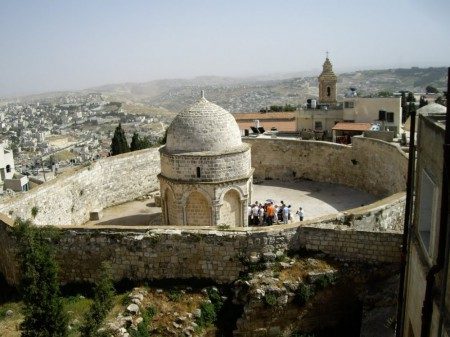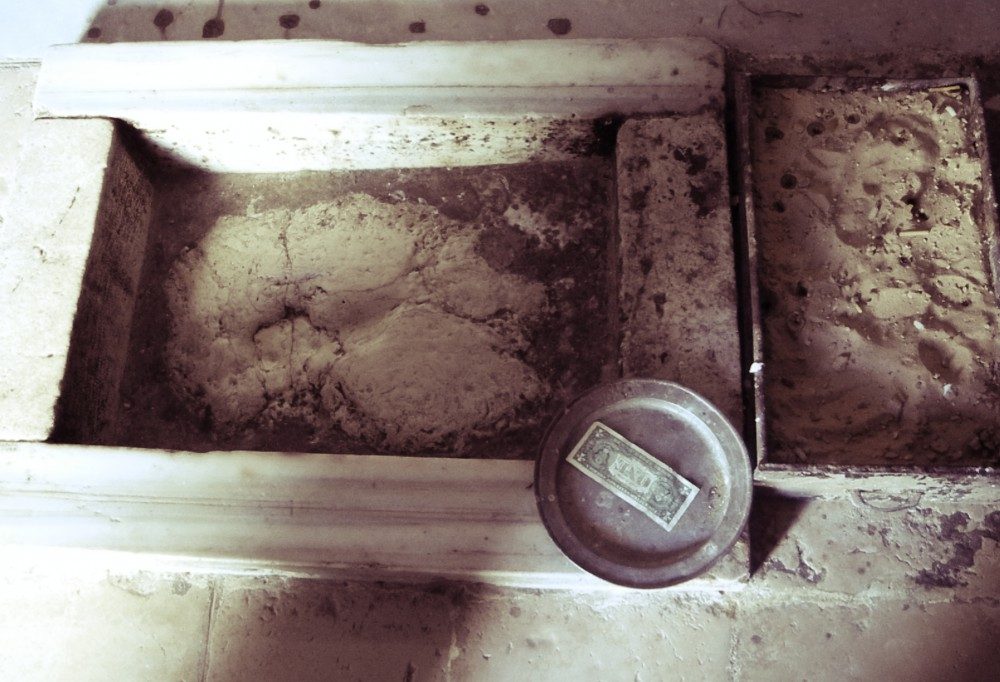
Near the end of our recent visit to the Holy Land, we made our way to the Chapel of the Ascension, in the At-Tur district of Jerusalem. I anticipated the stop with considerable eagerness.
Here Jesus issued marching orders that would inspire such daring as the world had seldom seen, such praying and obedience, such giving and sacrifice as to turn the world itself upside down. “You will be my witnesses,” he announced to his disciples, “in Jerusalem, in all Judea and Samaria, and to the ends of the earth” (Acts 1:8). Here the specific task of Christian mission was put under way. The task that stands at the heart of the World Mission Prayer League. The task that has inspired my own life – and maybe yours as well.
Yet the little site was singularly unimpressive. More than any other place in the Holy Land, in fact, this one left me cold.
A larger church occupied the site once upon a time: visitors can still discern its outline. A mosque stood here once upon a time, as well: visitors can discern a few remaining stones. Today, however, the place is mostly empty: a smallish, non-descript chapel stands at the center of a gravel lot. It is accessed by a single, tight doorway – unless you duck, you are likely to bump year head. The chapel contains no altar, no pews, no images or plaques, and no eye-level windows. It is topped by a simple rounded dome. The floor is bare, save for a small area roped off – about a meter square – with a glimpse of bedrock cleared in a smaller corner. There is something like a footprint in the surface of that rock: tradition presents it as the last footprint of Jesus, as he pushed off into heaven. A pan for offerings is placed just beside it, with a few dollars showing on the day of our visit.

I do not doubt that our Savior was born in Bethlehem – perhaps in the very grotto that I myself have seen. I do not doubt that he was baptised in the very River of Jordan, maybe near the spot where I stepped into the water myself. I do not doubt that he was reared in Nazareth, made Capernaum his home, and sailed the same waters of Galilee that fill the lake today. I think it likely that he died on the very rock of Golgotha that I have touched with my own hand, and rose from the tomb that stands empty nearby.
But a footprint in rock, as he pushed off from the Mount of Olives into heaven? Here, I think, the tradition has it wrong. Jesus leaves his footprint in our lives.
Jesus has become our peace: he turns us into peacemakers, too (Matthew 5:9; Romans 14:19). Jesus has become our life: he calls us to share that life with others (John 5:24; Acts 5:20). We are called to share in his suffering (1 Peter 2:21). We are called to reflect his saving light (Matthew 5:14-16). Jesus gave himself, humbled himself, and became obedient to the Father’s will even unto death: we are called to “have this mind” ourselves (Philippians 2:5-11). Jesus makes us his disciples; then he calls us to make disciples for him (Matthew 28:18-20).
In a sermon for Ascension Day in 1523, Martin Luther explained the purpose of Christ’s Ascension: “And for this purpose did [Jesus Christ] ascend up thither, that he might be down here, that he might fill all things and be everywhere present; which thing he could not do had he remained on earth.” Now “he is present everywhere,” Luther explained. He is present through his gracious rule, in the Word of God and the Sacraments. And he is present in the lives of his disciples.
I am not so sure about the oblong impression one may see in the rock on the Mount of Ascension: I am not sure that Jesus left a footprint there. But he did leave this: “As the Father has sent me, so I send you” (John 20:21). He left this: “All authority in heaven and on earth has been given to me. Go therefore and make disciples of all nations…” (Matthew 28:18,19).
He left you and me. He makes us, in a sense, his hands and feet in the world.
Beautiful message! May His imprint be in all our hearts.
Amen … indelibly in our hearts.